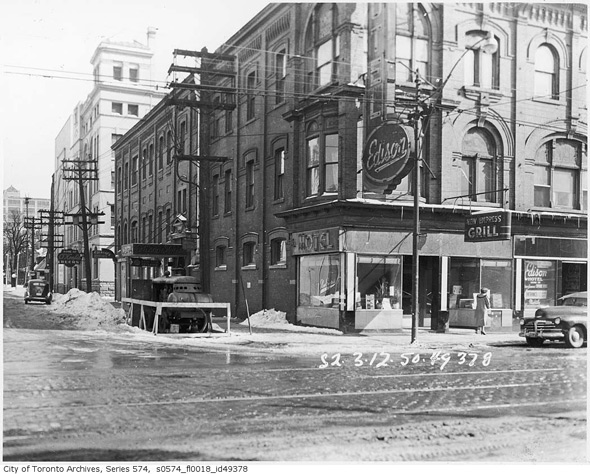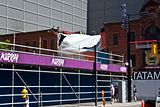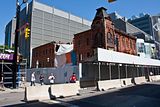After all, in the absence of a story what is heritage but a collection of eventually outdated structures, obstacles to change and progress? It is the story that confers the significance which is why relatively newer structures like Boston City Hall remain vulnerable until their story is understood, contextualized and embraced.
Well, maybe an important issue here re Toronto is not so much a raw disregard for "our collective heritage", but that that our approach to it over time has, except for the potboilers, been excessively subjective and impressionistic--like, in the case of Yonge & Gould, the building was listed and sandblasted back in the day and most everything else hinged upon a hypothetical Potter Stewart-esque "I know it when I see it" reflex;
but it's telling that in all this reportage, the actual story of the place has been mute--as if the generic "Yonge & Gould" were all that sufficed. The inherent
sympathy is there, i.e. the yahoo reflex of "it was a firetrap that should have been knocked down long ago" is about as universal as support for a Rob Ford mayoralty, I wouldn't label it "typical" by any means. But the backup's been lacking. The process of its being "understood, contextualized and embraced" has thus far been passively half-baked.
However, there remains virtue to the "impressionistic" approach--ideally, of course, as part of a broader synergy; but also as "preventative medicine" and, well, in its (as I put it) "hit-the-ground-running meta-mythological" way, to even override your kind of hand-wringing over the absence of commitment/collective story/whatever.
Which is why I highlighted the "collection of eventually outdated structures" thing above--essentially, there's the root of the fallacious, hackish attitude. Once you view your surrounds,
anywhere, as just a "collection of eventually outdated structures", you've suspended yourself in an unnecessary vacuumland, whether out of disdainful snobbery or ignorance or self-conscious overrefinement.
Thus re
Absolutely. A collective story is easier to tell and save than buildings, but it will also have far greater power to save them in the long run. In this sense we should not be so disdainful of the armchair hack who is able to get to the meat and potatoes of what is truly important while the self-appointed 'knowledgeable' among us will spend an eternity wringing their hands over useless details - all things being equal - like whether a building is preserved in situ or not... as it is lost to the wrecking ball.
I'd actually argue that, while not to the point of NIMBY nuisance, we should have a strategically broad scope of "what is truly important"--yes, even venturing into the realm of so-called detritus and crud when necessary. After all, this isn't just about "important buildings"; it could just as well pertain to averting the rampant shaved cornices, clumsy window replacements, and EIFS-i-fication in many a BIA neighbourhood,
without having to justify whether it involves "a historical property" or not. And with such scaleable agility re the low end, the middle and high ends will follow. It's a common existing cityscape; approach it with love and wit.
And you know something...forget Toronto. If we use this disarming approach in visiting New York, London, Paris, Boston, heck even Brampton, we might wind up out-localling the locals; which is practically the inverse of those who visit Toronto and gripe about our so-called ugliness, etc.
Remember re said "armchair hack who is able to get to the meat and potatoes of what is truly important" is that he/she only has a armchair-hack notion of said meat and potatoes.





